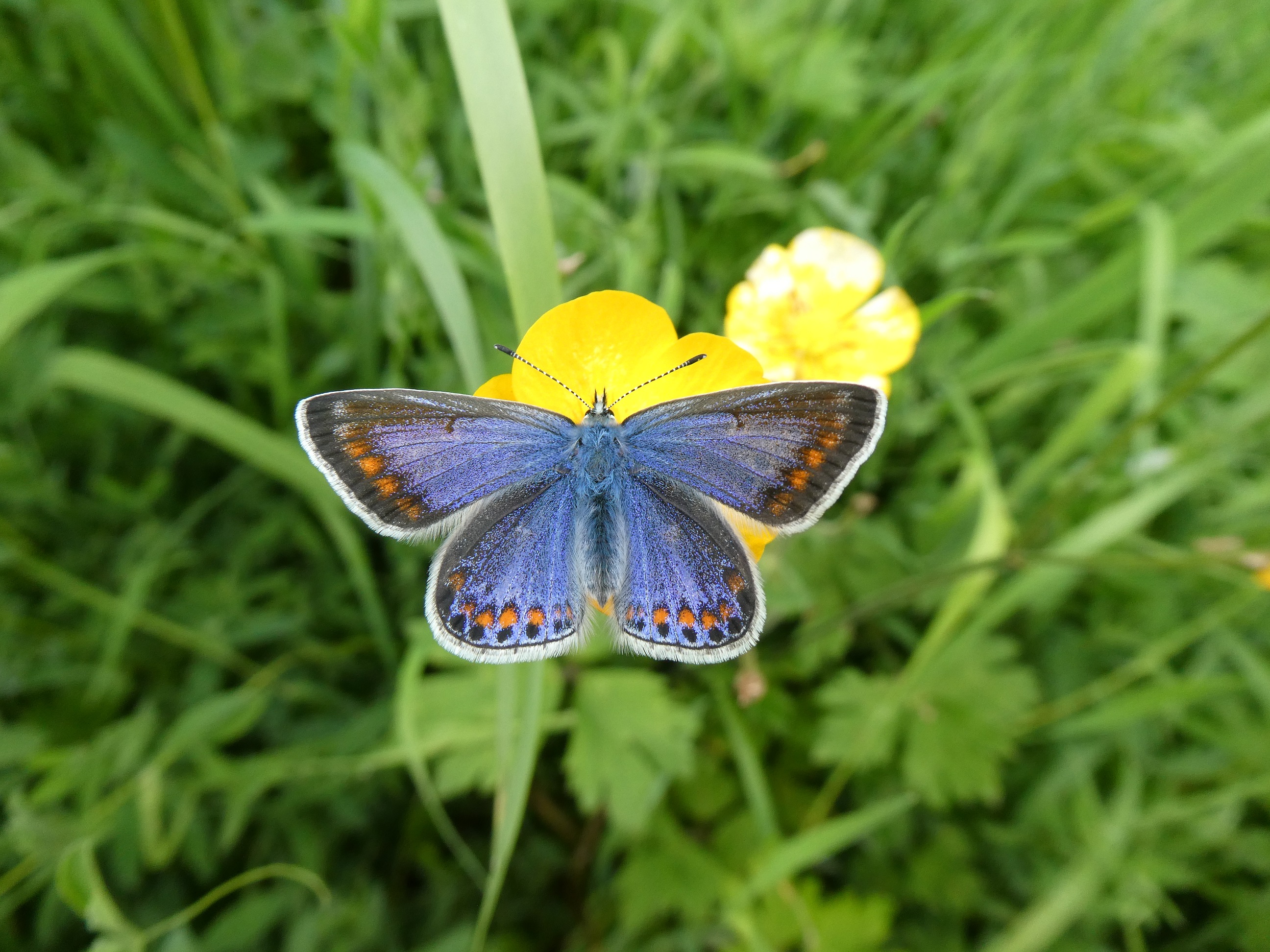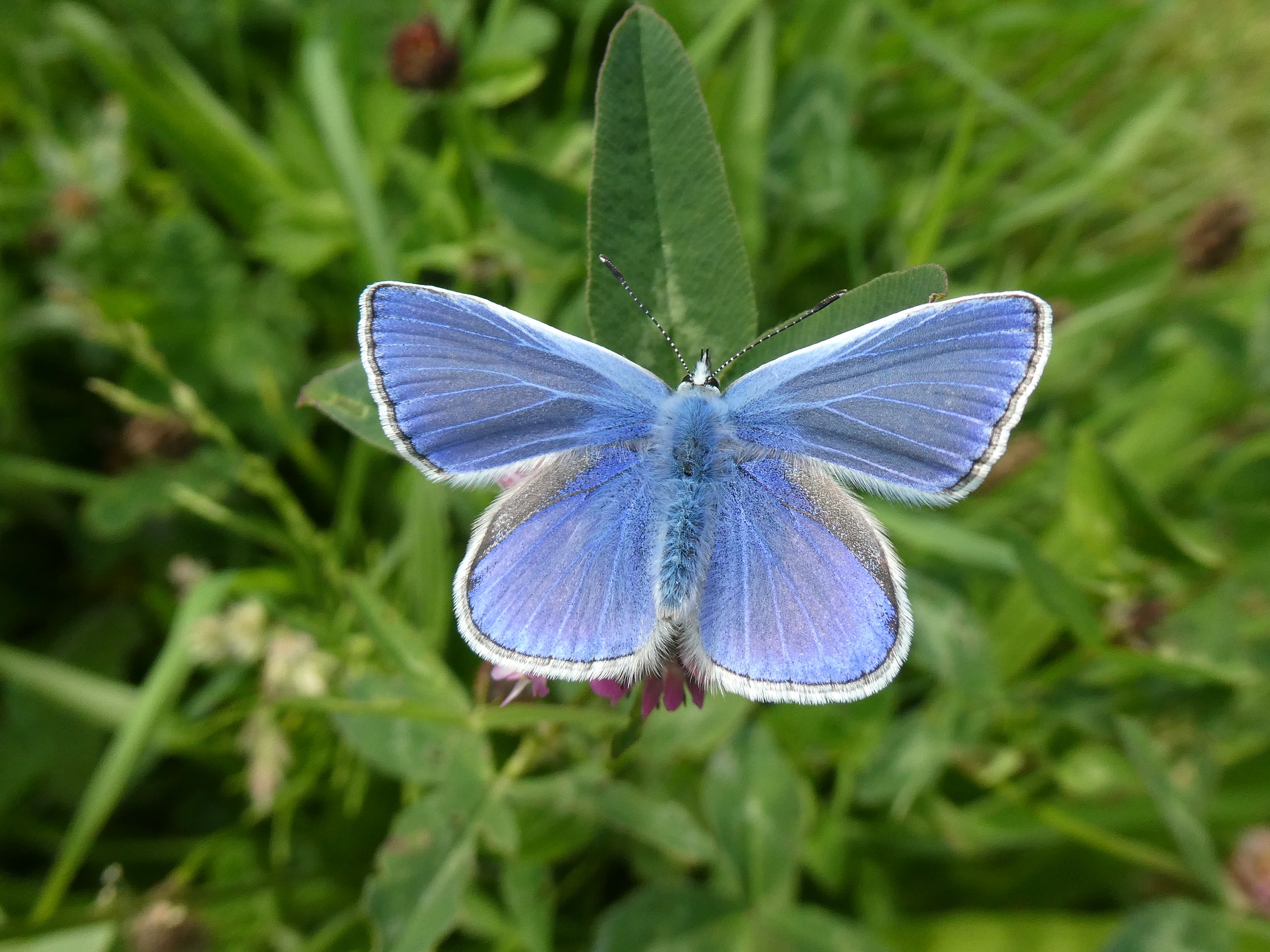Clongawny is just outside Mullingar, not far from the N4. The visited sites lie north and south of the Royal Canal and are quite different. One is calcareous grassland on the steep bank above the canal while the other is a low-lying area of wet, boggy grassland.
We met at the car park near the high bank and set off for the damp grassland first; it is very exposed offering no shelter against the expected rain shower. We needed to catch the sun while we had it. The site was discovered to hold a large Marsh Fritillary colony two years ago. Local Butterfly Conservation Ireland members Lesley Whiteside and Richella Duggan monitor the site. Some scrub was cut and an invasive grass, Reed Canary-grass, was mechanically controlled. Waterways Ireland were notified and an agreement reached that the site’s main nectar resource area would not be mown during the Marsh Fritillary flight period.
In 1902 an observer named Middleton reported a Marsh Fritillary population explosion in the Mullingar area. The general landscape has greatly changed since those heady days but we were keen to see how the present-day population is faring.
The site certainly does not have the look of a classic Marsh Fritillary site. Most colonies breed on areas where the Devil’s-bit Scabious, the larval foodplant, is very visible as well as abundant. However, even when standing on the site it is hard to see the Devil’s-bit Scabious. The most obvious characteristic of the site is the dominance of rank grasses. It is only in late summer when the scabious is in bloom that the extent of its abundance becomes clear. The site does have a southerly aspect, a characteristic that is frequently important for the butterfly.
Our group consisted of around 20 people ranging from the very young to the young at heart-great to see interest in nature shared across the demographic! We walked on the main track through the site and Marsh Fritillaries soon zoomed in-and-out- of view. Males are tricky to follow in flight as they are very active in the sunshine, darting erratically across the grassland, plummeting when a stiff blast of blustery wind pushes it back. Fortune favoured close inspection-the sun was intermittent causing males to land and bask on vegetation. Phones, as well as cameras, were used to take photographs. Some butterflies quietly perched on hands when encouraged, offering great close-ups of this highly local species. A few Cryptic Wood Whites fluttered laboriously around the site, occasionally pestered by urgent fritillaries. There was not much in flower for the butterflies to feed on. A few tiny tormentils, buttercups and a few clumps of Kingcup (the first time I’ve seen this fritillary use the plant) were really all there was but the butterflies were active regardless.
After we walked the site, we rejoined the towpath and continued east for around 150 metres and entered the edge of the local bog. Here there is a transition zone between raised bog and damp grassland that contains an obvious abundance of Devil’s-bit Scabious and, in the driest areas, Common Bird’s-foot-trefoil. Patches of scrub provide shelter. A really dense colony of Marsh Fritillary was found here. Common Blue, Burnet Companion moth and Common Heath were recorded too. The frenetic activity of the Marsh Fritillary here created great interest and it is a lovely and interesting area to linger at.
But we re-traced our steps to get our lunch. Lesley’s delicious cookies were delicious! Hot tea and cookies fortified us for the high bank which is awash with vetches, trefoil, hawkbits, orchids and in parts, Kidney Vetch, a rare plant in this area. The sunny track here is great for Dingy Skipper, Common Blue and Cryptic Wood White. We enjoyed watching a lovely ‘blue’ female lay on Common Bird’s-foot-trefoil before darting decisively down the track to seek, no doubt, fresh breeding ground.
We then headed home, happy that the Marsh Fritillary is still in the Mullingar area 117 years after it was reported as a local plague! It is very unlikely we will ever see mass populations again given the damage done to the natural landscape but at least we know where to find the species, and we have local people who care for the butterfly and take the steps needed to keep the butterfly happy.
A special thanks to the event organisers and everyone who came to the event, and in particular to the Baltrasna Environmental Group who take such care of and pride in their wild places.




Photo J. Harding.

